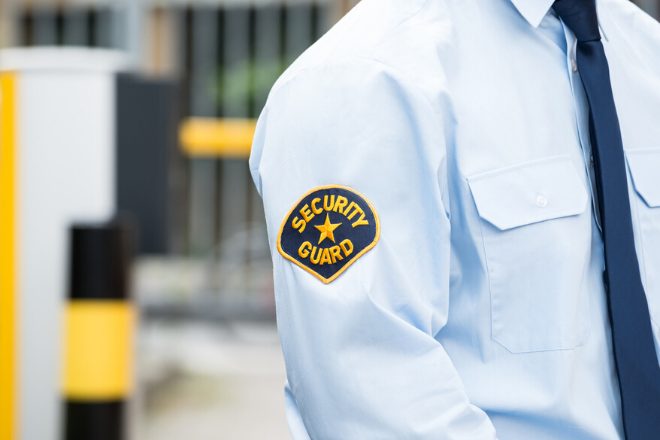|
Article by Joe E. Carter, United Educators

United Educators Vice President, Business Development and Marketing
Every school prioritizes the safety of its students, but school budgets are not infinite, and every action comes with a cost, be it time, money or both. Given schools’ limited resources, it is important to evaluate strategies carefully and select those with the greatest potential to prevent or reduce the risk of violence. This will ensure you are not inadvertently endangering students or staff, increasing liability, wasting money and resources, or negatively impacting your school’s reputation.
When examining strategies, be sure you understand state laws regarding school safety. Some require schools to implement particular strategies. Even if your independent school is exempt from state law, some could argue that these strategies are the standard of care and that not adopting them could expose your school to claims if a severe incident occurs. Review and track state legislation on the National Conference of State Legislatures’ website and also consider consulting with counsel about your state’s laws.
Consider these risks and costs associated with common safety strategies:
Security Plans
When developing a security plan and establishing practices to mitigate or prevent a school’s security risks, seek guidance from legal counsel and a school security expert. While a lawyer knows the law, a security expert may have detailed knowledge about the standard of care with respect to specific security practices. These consultations will have a cost but should save the school money should a claim follow an incident.
Active Shooter Response
Understand the benefits and risks associated with the most common response options, the “lockdown” and “multi-option” approaches.
- Lockdown procedures require people to stay hidden and locked in a fixed location until an emergency is resolved. This common approach can potentially expose staff and students to danger by requiring them to lock doors and barricade windows in an emergency.
- The multi-option approach enables participants to instinctively choose a response tactic including attempts to escape, hide or engage a shooter. It may ensure a faster resolution than a lockdown, but it can be problematic. Staff and students could choose a response that exacerbates the situation, further endangering themselves and others.
When selecting the best option for your school, consider your school’s size, location, physical configuration, population and culture. Document your thought process and reasons for choosing the approach. This record can provide evidence your school acted reasonably should an incident occur.
If training is not age-appropriate, it can be traumatic. Consider providing different versions of the training for teachers/staff and for different age groupings within the student body.
Furthermore, if training is not age-appropriate, it can be traumatic. Consider providing different versions of the training for teachers/staff and for different age groupings within the student body. Avoid using ammunition of any type during drills, regardless of age. Drills using airsoft pellets and rubber bullets have severely injured participants.
Rather than replicating an actual shooter, use a simulated unarmed intruder to practice your response plan. Avoid conducting surprise live drills, which can be traumatic for participants. Understand as well that full-scale drills can be time and labor intensive. Consider tabletop exercises as an alternative or supplement.
Securing Classroom Doors
To date, no active school shooter has breached a locked classroom door. Before purchasing barricades to secure doors, however, speak with an attorney and a security expert. Most barricades do not comply with state and local fire codes. Costs for barricades vary significantly depending on type, which can range from rubber doorstops to industrial grade security devices.
When it comes to doors with windows, consider providing a temporary covering to help obstruct a shooter’s view into a classroom. Temporary coverings are preferable because permanent classroom privacy may increase the risk of sexual abuse, which occurs more often than shootings. In addition, making glass doors and windows shatter- and bullet-resistant as well as installing classroom doors made of bulletproof materials will be costly but may have significant benefits by saving lives in the event of an active shooter.
The National Association of State Fire Marshals provides a good checklist of best practices for classroom door security, based on building codes, life safety codes, fire codes and federal laws. United Educators also provides a checklist for the physical security of K-12 schools (go.nboa.org/UEchecklist).
Threat Assessment
Threat assessment processes help schools identify and address student behavior that poses a threat of violence before any violence occurs. Policies should define behaviors that warrant immediate intervention, such as threatening or engaging in violence, or bringing a weapon to school. Discovering plans for violence can help prevent violence from occurring at all. For example, in the vast majority of school shootings that have occurred, the shooter shared those plans with others prior to the event.
UE has created a checklist for school administrators to either establish a new threat assessment process or evaluate the effectiveness of existing processes.
Having properly trained armed campus security personnel can be helpful in preventing shootings — especially if they’re the kind of people students feel comfortable speaking to should security concerns arise
Arming Campus Security
Having properly trained armed campus security personnel can be helpful in preventing shootings — especially if they’re the kind of people students feel comfortable speaking to should security concerns arise. Keep in mind, however, that if a shooting occurs, your school’s decision-making process around allowing employees to carry firearms will be greatly scrutinized. You want to show that the school’s actions were reasonable under the circumstances and met the standard of care. For this reason, documentation and support for your decision-making process will be important.
Protecting students and staff is of utmost importance. By carefully considering hidden and unhidden costs, you’ll better understand and decide on the safety strategies that make the most sense for your school.





